Forefront T is the ideal herbicide for controlling a combination of weeds such as nettles and docks in grazing pastures.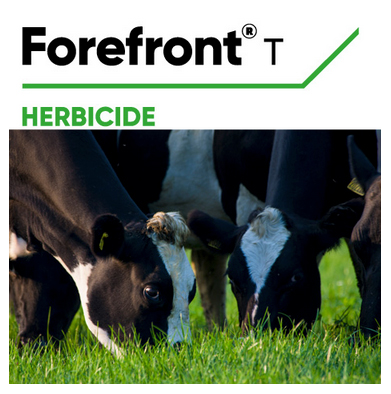
Choosing the right herbicide is the key to effective control of weeds in grazing pastures. Spraying at the right time in order to ensure the most effective kill of the weeds present is another critical consideration.
Where there is a combination of weeds such as docks, thistles, chickweed, dandelions and buttercups, it is important to use a broad spectrum systemic herbicide.
The herbicide Forefront T is the gold standard in broad spectrum weed control in grazing pastures and has become the product of choice for a growing number of farmers.
Manufacured by Corteva Agriscience, it contains two chemicals, aminopyralid and triclopyr. This powerful combination makes it the perfect choice for a wide range of weeds, including docks, thistles, nettles, buttercups, chickweed and dandelions. It is also ideal for ragwort.
As with all systemic herbicides, best results from Forefront T are achieved by spraying when weeds are actively growing and are at the right stage for a good kill of the root system.
- Docks should be 15-25cm high or wide and before a seed head begins to show.
- Thistles should have four to 10 leaves and be 15-25cm high and before flowering.
- Nettles should be sprayed before they flower.
If weeds are gone beyond these stages, it is best to top them and spray with Forefront T after about three weeks regrowth when they should be at the right stage for an effective kill.
Apply Forefront T as a single application at two litres/ha in a minimum 200 litres. Keep stock off the pasture for seven days after spraying.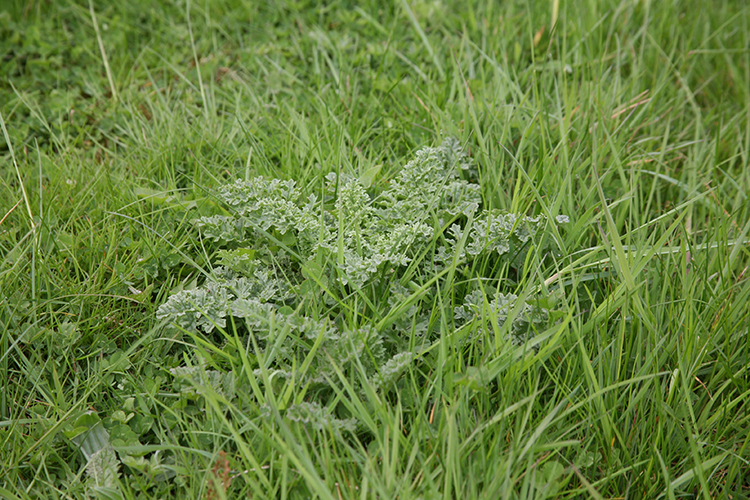
Apply Forefront T when ragwort is at the rosette stage and during a period of active growth, with temperature above 10°C
Forefront T perfect for ragwort
Forefront T is the perfect herbicide for controlling the noxious weed ragwort, which can be lethal to livestock.
Apply Forefront T when the ragwort is in the rosette stage and during a period of active growth with warm temperatures (above 10°C).
In grazing paddock systems, timing of the spray can be difficult to get right. Where ragwort is the only weed been targeted, spraying can occur when animals are removed from the paddocks as the rosettes would still be intact.
This allows at least three to four weeks before animals are back in to graze, which in a lot of cases would be adequate time for the plant to die away completely.
However, where the plant starts to produce a stem, it could take up to eight weeks after spraying for it to disappear.
In this situation, spraying in late autumn when pastures are being closed for the winter can work very well, provided there still is growth and temperatures are above 10°C.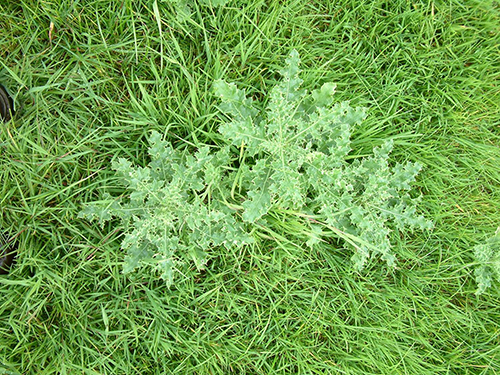
For most effective control, thistles should have four to ten leaves, be 15cm to 25cm high and before a seed head appears when spraying with herbicides such as Thistlex, Forefront T and Pastor Trio.
Advice on killing thistles
Thistles play havoc with grass yields and have a huge impact on animal performance. They are also an animal health risk, spreading diseases such as orf, pink eye and mastitis.
Research has shown that animals leave 30cm ungrazed around each thistle plant. Fifty thistles per 20 sq metres, which is very common in thistle-infested swards, can mean a drop of 50% in grass dry matter yield.
Creeping thistle seeds can survive in soil for 21 years. The roots of one creeping thistle can grow to cover five sq metres in one year and up to 80 sq metres in two years. The weight of the underground creeping thistle root system can be up to 2.5 tonnes tonne/ha.
In its second year, a spear thistle can be over a metre in diameter before flowering. One flower head produces up to 400 seed heads, each of which can produce between 4,000 and 8,000 seeds. The seeds can remain viable for at least three years.
The use of a systemic herbicide is the only effective to kill the thistle root system. MCPA-based products have very little impact on the root system. While killing the foliage of the thistle, they merely act as a ‘chemical topper’, with the thistles re-emerging the following season.
Where thistles are among the range of weeds in a grazing pasture, Forefront T should be the product of choice.
Thistlex
Where thistles are the sole or major weed in a sward, use Thistlex, the specialist thistles herbicide. It contains the active ingredients triclopyr and clopyralid, which are absorbed right down to the roots of the thistles.
As with Forefront T, thistles should be actively growing, have four to 10 leaves, be 15-25cm high and before a seed head appears.
If they have gone beyond this stage, it is best to top them and spray with Thistlex when they have regrown to the correct stage.
Silage/Hay Swards
In silage or hay swards that are not due to be cut for the next three to four weeks, there is still time to spray thistles. Controlling them before the crop is cut will boost yield, quality and palatability of the winter feed and will also ensure a clean, productive sward for subsequent grazing.
If thistles are the major weed in a silage/hay sward, using Thistlex is the most cost-effective option. If other weeds are also present, Pastor Trio should be the product of choice.
As well as thistles, it is also powerful on a range of other weeds, including common chickweed, mouse-eared chickweed, docks, buttercups, dandelions, daisies and plantain.
Whichever systemic herbicide is being used, it is important to leave at least three weeks between spraying and cutting the crop in order for the chemicals to be absorbed right down to the root system of the weeds.
Apply Thistlex at one litre/ha. Apply Pastor Trio at two litres/ha. Use a minimum of 200l water/ha. Keep animals off pasture for seven days after spraying.
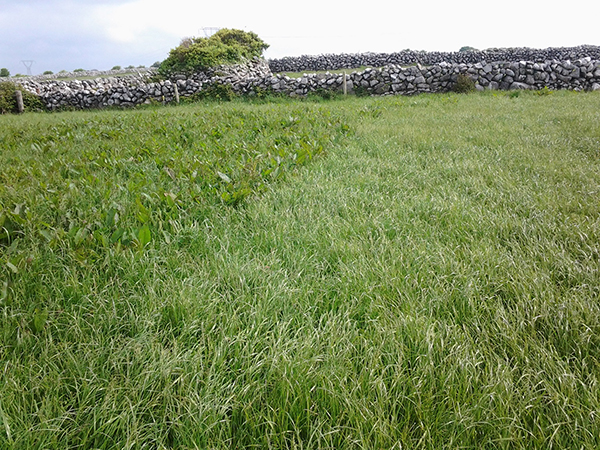
The power of Doxstar Pro can be seen from this picture. The section on the right was completely free of docks about four weeks after spraying. The section on the left was not sprayed and is heavily infested with docks.
Control docks after silage is cut
Docks are a perennial problem in silage swards and grazing pastures and have a devastating effect on dry matter yield and forage quality.
The best option for controlling docks in silage swards is by spraying with Doxstar Pro, the specialist docks herbicide, before the silage is cut.
It contains two powerful chemicals, triclopyr and fluroxypyr, ensuring the most effective kill of the dock root system. And as with Forefront T, Thistlex and Pastor Trio, it does not cause any check to grass growth.
Where there was not an opportunity to spray before silage-cutting, every effort should be made to spray the aftergrass, thereby ensuring a big increase in grass output and animal performance for the rest of the year and beyond.
Docks should be at the ideal stage for effective treatment with DoxstarPro three to four weeks after silage is cut.
It should be applied at a rate of two litres/ha as a single application or two applications of one litre/ha six to 12 months apart.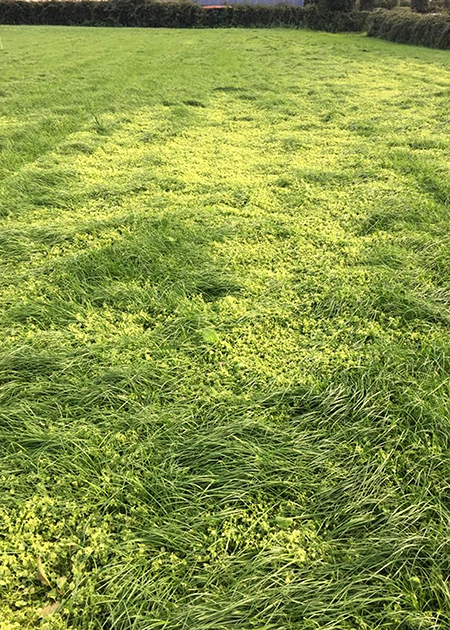
If not controlled early, chickweed can smother large parts of a new reseed.
Keeping new pastures clean
Pastures reseeded in recent weeks should be watched closely for weed infestation and weed control should be seen as an integral part of the reseeding programme.
If not controlled early, weeds such as chickweed and docks can devastate new swards. Pastor Trio is the ideal herbicide. As well as controlling chickweed, docks, thistles, dandelions, buttercups and plantains, it is also effective on annual weeds such as redshank, charlock, mayweed and fumitory.
It can be applied from the third leaf visible stage of the grass. The application rate on reseeded pasture is one litre/ha in 200l water.










